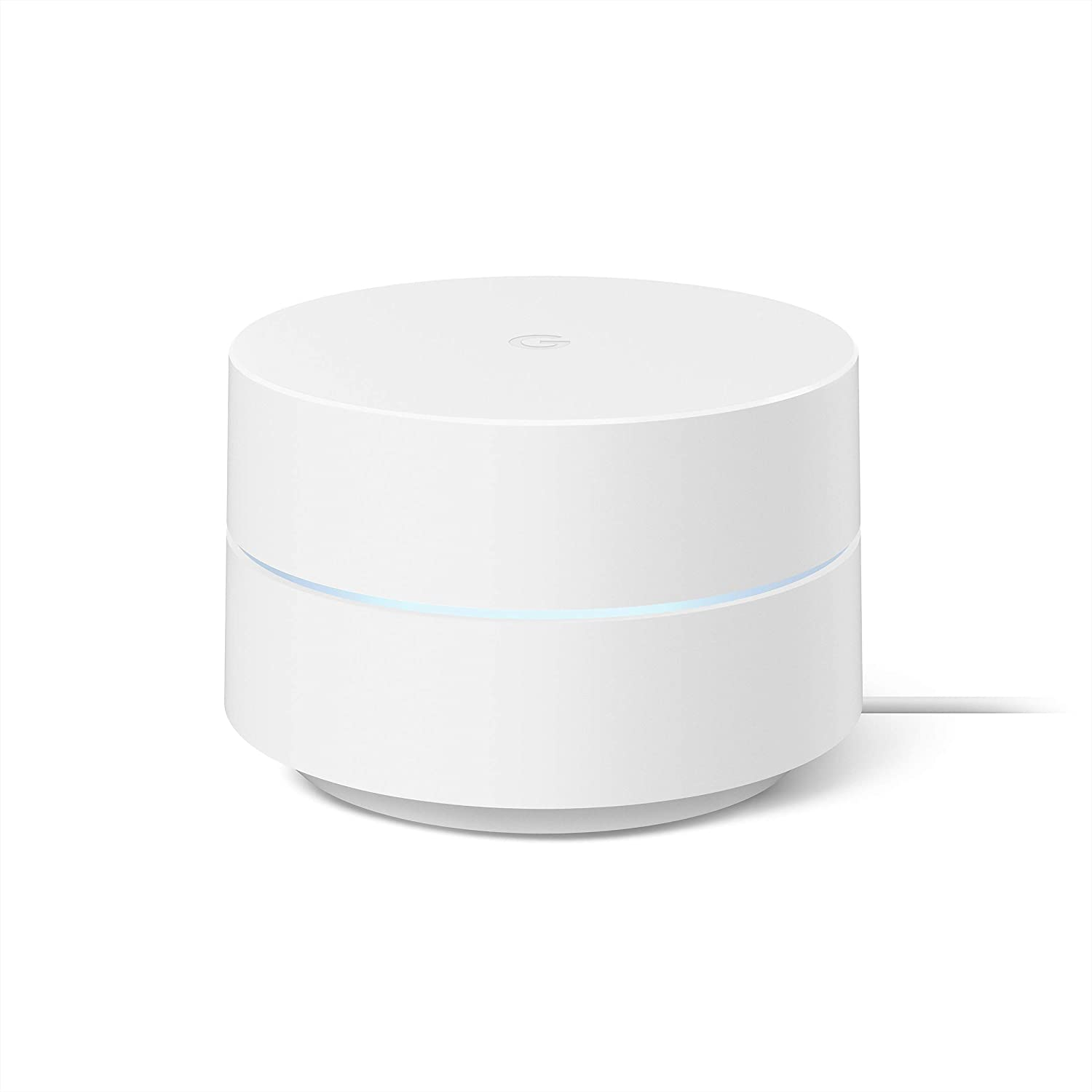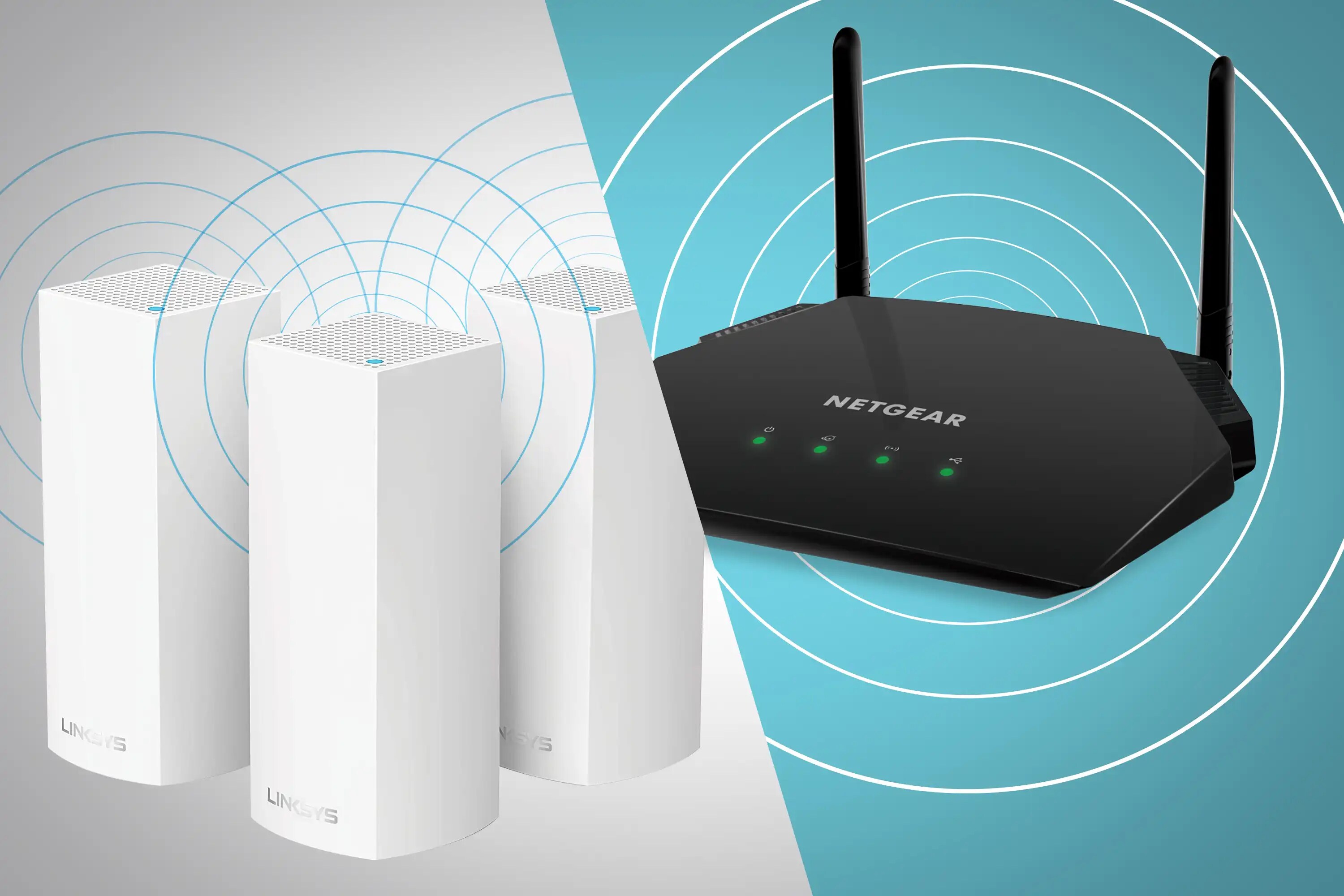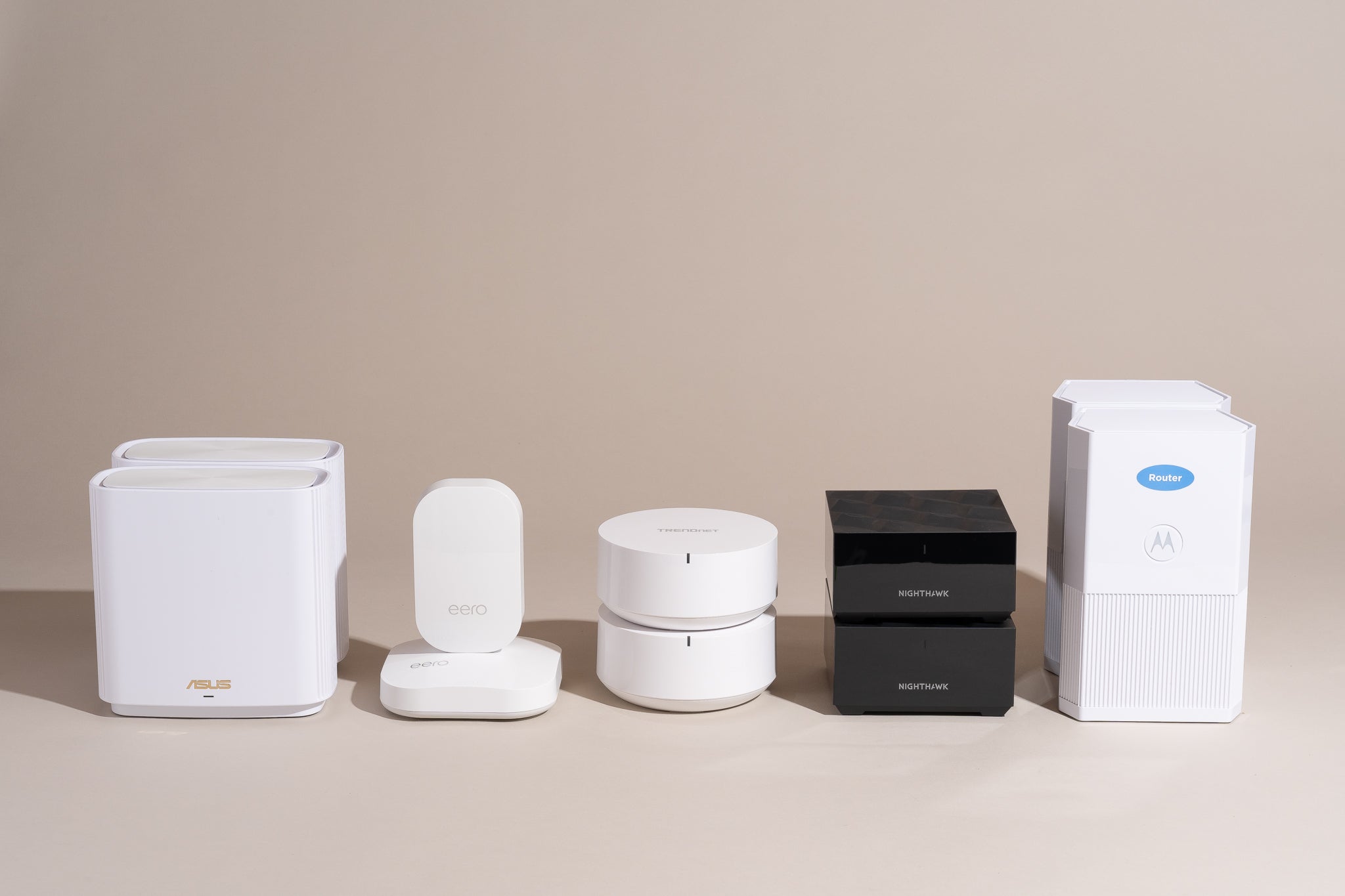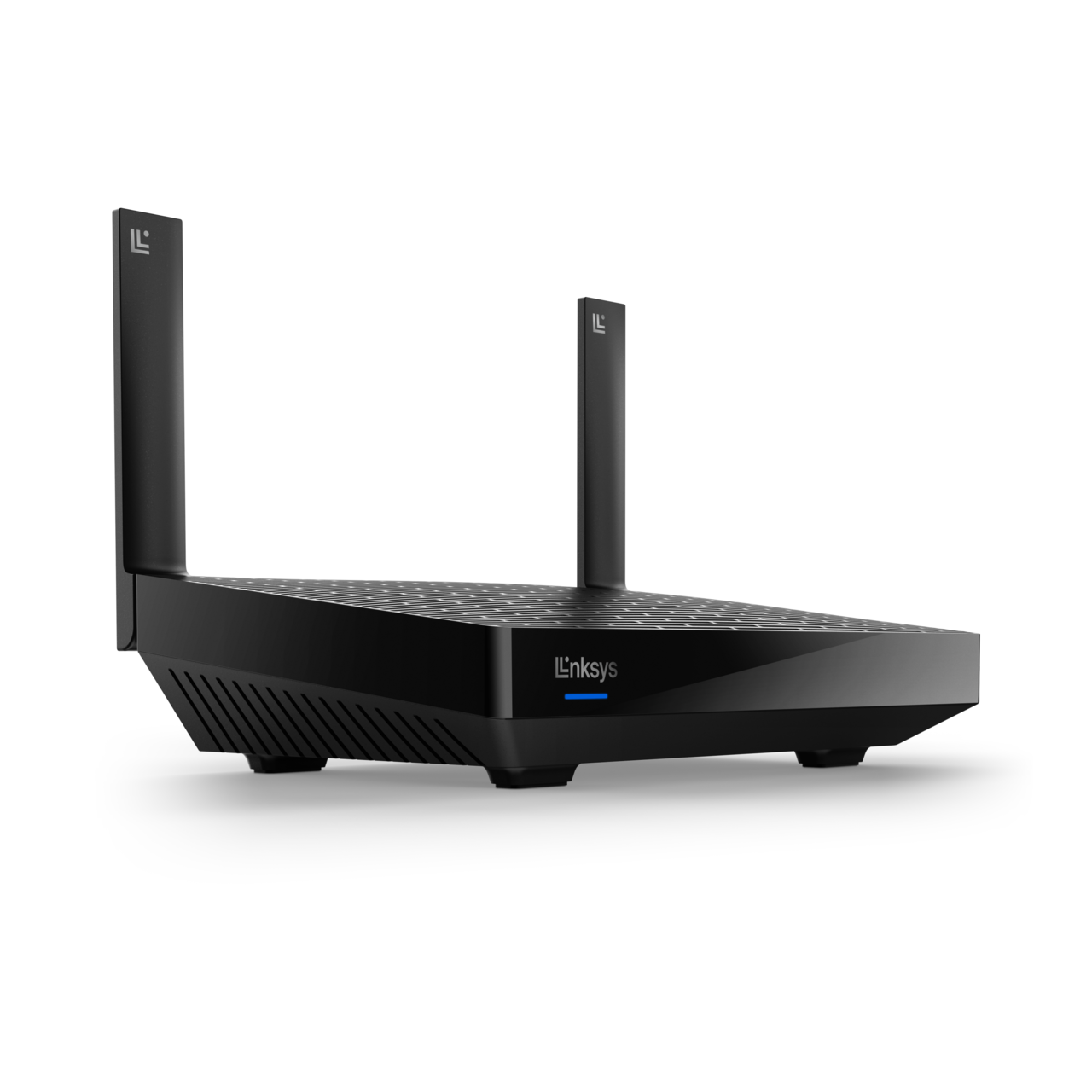Introduction
Welcome to the world of WiFi mesh systems! In today’s digital age, having a reliable and fast internet connection is essential. From streaming your favorite shows and movies to working from home, a stable WiFi network is crucial for seamless connectivity. This is where WiFi mesh systems step in to revolutionize the way we access the internet.
So, what exactly is a WiFi mesh system? Simply put, it is a cutting-edge technology that improves WiFi coverage and eliminates dead zones in your home or office. Unlike traditional routers, which rely on a single device to transmit signals, a mesh system comprises multiple nodes that work together to create a high-performing WiFi network.
In this article, we will explore the fundamentals of WiFi mesh systems, how they work, and the benefits they bring. We will also provide insights into when you should consider using a mesh system, factors to consider before purchasing, tips to set up your system, and troubleshooting strategies for common issues that may arise.
By the end of this article, you will have a comprehensive understanding of WiFi mesh systems and the confidence to choose the right one for your needs. So, let’s dive in and unravel the mysteries of this innovative technology!
What Is a WiFi Mesh System?
A WiFi mesh system is a revolutionary technology designed to improve WiFi coverage and eliminate dead zones in your home or office. Unlike traditional routers that rely on a single device to transmit signals, a mesh system consists of multiple nodes strategically placed throughout the area you want to cover.
Each node acts as a wireless access point, communicating with the other nodes to create a seamless wireless network. This intelligent network ensures that your devices stay connected to the strongest and fastest signal, no matter where you are within the coverage area.
One of the key features of a WiFi mesh system is its ability to self-organize and optimize the network automatically. These systems use advanced algorithms to determine the best path for data transmission and dynamically adjust the signal strength and channel allocation to minimize interference and maximize performance.
Another advantage of mesh systems is their scalability. You can add additional nodes to expand the coverage area without compromising the network’s performance. This flexibility makes them an ideal solution for homes of all sizes, from small apartments to large estates, as well as for offices and commercial spaces.
It’s important to note that a WiFi mesh system is different from a WiFi extender or repeater. While extenders amplify the existing signal from your router, they can often lead to a decrease in speed and performance. Mesh systems, on the other hand, create a unified network with multiple access points, ensuring a stable and consistent connection throughout your space.
With a WiFi mesh system, you can bid farewell to frustrating experiences like weak signals, dead spots, and constant buffering. Whether you’re streaming videos, playing online games, or conducting video conferences, a mesh system provides a reliable and seamless internet connection for all your devices.
Now that we understand the basics of WiFi mesh systems, let’s take a closer look at how they work and the benefits they offer.
How Does a WiFi Mesh System Work?
A WiFi mesh system works by utilizing multiple nodes to create a network that extends the coverage area and ensures a strong and reliable WiFi signal throughout your home or office. Unlike traditional routers, which rely on a single device to transmit signals, mesh systems distribute the workload among several nodes.
The nodes in a mesh system communicate with each other wirelessly, forming a network known as a “mesh.” One node is connected to your internet service provider’s modem and acts as the primary router. The additional nodes, also known as satellites or access points, strategically placed throughout the area, extend the network coverage.
When you connect a device, such as a smartphone or laptop, to the WiFi mesh network, it automatically determines the node with the strongest signal and connects to it. As you move around your home or office, the device seamlessly switches to the node with the best signal, ensuring a consistent and optimal connection.
Mesh systems use dynamic routing algorithms to determine the most efficient path for data transmission. This means that if one node experiences congestion or interference, the system can dynamically redirect data through an alternative route, providing a smooth and uninterrupted WiFi experience.
Furthermore, WiFi mesh systems employ advanced technologies such as beamforming and band steering to optimize performance. Beamforming focuses the WiFi signal directly towards devices, improving signal strength and reducing interference, while band steering automatically assigns devices to the optimal frequency band (2.4GHz or 5GHz) for the best performance.
Setting up a WiFi mesh system is typically straightforward, with user-friendly mobile apps or web interfaces guiding you through the process. Once the nodes are connected and configured, they work together seamlessly to create a unified network, eliminating the need for multiple SSIDs (network names) and ensuring a seamless transition between nodes.
By distributing the workload across multiple nodes and automatically managing the network, WiFi mesh systems provide a reliable and robust wireless experience. Whether you’re streaming HD videos, playing online games, or connecting multiple smart home devices, a mesh system ensures that your WiFi signal remains strong and stable throughout your space.
Now that we understand how a WiFi mesh system works, let’s explore the benefits it offers over traditional routers and when it may be the right choice for your network needs.
Benefits of a WiFi Mesh System
A WiFi mesh system offers several advantages over traditional routers, making it a popular choice for improving WiFi coverage and connectivity. Let’s explore some of the key benefits:
1. Excellent Coverage: One of the primary benefits of a WiFi mesh system is its ability to provide extensive coverage throughout your home or office. By utilizing multiple nodes strategically placed in different areas, a mesh system eliminates dead zones and ensures a strong WiFi signal in every corner.
2. Seamless Roaming: With a WiFi mesh network, you can move freely around without losing your connection. The system automatically switches your device to the node with the strongest signal, providing seamless roaming and allowing you to enjoy uninterrupted internet access from room to room.
3. Enhanced Performance: WiFi mesh systems utilize advanced technologies like beamforming and band steering to optimize performance. Beamforming directs the WiFi signal towards your devices, increasing signal strength and reducing interference. Band steering automatically assigns devices to the best frequency band for optimal performance, ensuring a fast and reliable WiFi experience.
4. Scalability: WiFi mesh systems are highly scalable, allowing you to expand the coverage area by adding additional nodes. Whether your home grows in size or you need to extend the network to an outbuilding, you can easily integrate new nodes into the existing mesh system without sacrificing performance.
5. Self-Healing Network: Mesh systems have self-organizing capabilities, meaning they can automatically optimize the network for the best performance. If one node fails or experiences issues, the system can reroute traffic through other available nodes, ensuring a seamless and uninterrupted connection.
6. User-Friendly Setup and Management: Most WiFi mesh systems come with user-friendly mobile apps or web interfaces that simplify the setup and management process. You can easily configure the network settings, monitor connected devices, and perform firmware updates from the convenience of your smartphone or computer.
7. Aesthetically Pleasing Design: Unlike traditional routers with bulky and often unsightly designs, WiFi mesh systems usually feature sleek and compact nodes that blend seamlessly with your home or office decor.
By leveraging these benefits, WiFi mesh systems offer a superior WiFi experience, improving coverage, performance, and convenience for all connected devices.
Now that we’ve explored the benefits of a WiFi mesh system, let’s discuss when it may be the right choice for your network needs.
When Should You Consider Using a WiFi Mesh System?
While WiFi mesh systems offer numerous benefits, they may not be necessary for every situation. Here are some scenarios where you should consider using a WiFi mesh system:
1. Large Homes: If you live in a large home, multiple-story house, or sprawling estate, a WiFi mesh system is highly recommended. Traditional routers may struggle to provide consistent coverage throughout such extensive spaces, leading to dead zones and weak signals. A mesh system ensures that every room is covered, giving you a strong and reliable WiFi connection from one end of your home to the other.
2. Homes with Thick Walls or Interference: If your home has thick walls, concrete partitions, or other physical barriers that hinder WiFi signals, a mesh system can help overcome these obstructions. By strategically placing the nodes, you can create a mesh network that bypasses these obstacles, ensuring a strong and stable connection throughout your home.
3. Eliminating Dead Zones: Dead zones are areas in your home or office where the WiFi signal is weak or nonexistent. These areas can be frustrating, especially when you need internet access in those spots. A WiFi mesh system effectively eliminates these dead zones, providing reliable WiFi coverage in every nook and cranny of your space.
4. Multiple Devices and Bandwidth Requirements: If you have a household or office with numerous devices connected to the network simultaneously, such as smartphones, laptops, gaming consoles, smart TVs, and smart home devices, a WiFi mesh system is ideal. The system manages the increased traffic flow efficiently, preventing congestion and ensuring a smooth online experience for everyone.
5. Remote Work and Video Conferencing: With the rise of remote work and video conferencing, a reliable and fast WiFi connection is vital. WiFi mesh systems offer a stable and robust network, minimizing audio and video disruptions during important virtual meetings and presentations.
6. Expanding WiFi Coverage to Outdoor Areas: If you want to extend your WiFi coverage to outdoor areas such as gardens, patios, or pool areas, a WiFi mesh system with weather-resistant nodes is an excellent solution. You can work, entertain, or relax outside without worrying about losing connectivity.
Now that you understand some of the scenarios where a WiFi mesh system is beneficial, let’s move on to the factors you should consider when choosing a mesh system for your specific needs.
Factors to Consider When Choosing a WiFi Mesh System
When selecting a WiFi mesh system, there are several key factors to consider to ensure you choose the right one for your specific needs. Here are some important factors to take into account:
1. Coverage Area: Evaluate the size of the area you want to cover with WiFi. Consider the number of floors, walls, and obstacles that may impact signal strength. Look for a mesh system that offers sufficient coverage to eliminate dead zones and provide a strong WiFi signal throughout your space.
2. Number of Nodes: Consider the number of nodes required to cover your desired area effectively. Larger spaces may require more nodes to ensure seamless coverage. Additionally, some mesh systems offer the option to add additional nodes, allowing for scalability in the future.
3. WiFi Speed and Performance: Look for a mesh system that supports the latest WiFi standards, such as 802.11ac or 802.11ax, to ensure fast speeds and reliable performance. Consider the maximum data transfer rates and ensure they meet your specific requirements, especially if you engage in activities that demand high bandwidth, such as 4K video streaming or online gaming.
4. Ethernet Ports: If you have devices that require a wired connection, such as desktop computers or gaming consoles, check if the mesh system includes Ethernet ports on the nodes. This allows you to connect devices directly to the mesh system for a more stable and faster wired connection.
5. Ease of Setup and Management: Consider the ease of installation and management of the WiFi mesh system. Look for systems that provide user-friendly mobile apps or web interfaces that guide you through the setup process and offer intuitive controls for managing your network. The ability to easily monitor connected devices, perform firmware updates, and adjust settings is essential for hassle-free maintenance.
6. Security Features: Ensure that the WiFi mesh system offers robust security features to protect your network and connected devices from potential threats. Look for features such as network encryption (WPA2/WPA3), guest network support, and built-in firewall protection. These features help safeguard your network and ensure a secure online experience.
7. Price and Budget: Consider your budget when choosing a WiFi mesh system. Prices can vary based on the number of nodes, features, and brand reputation. It’s important to find a balance between affordability and the features and performance you require.
8. Brand Reputation and Customer Support: Research the reputation of the brand and the customer support they provide. Look for reputable brands that have a track record of delivering quality products and excellent customer service. This ensures that you will receive prompt assistance if you encounter any issues or have questions regarding the mesh system.
By considering these factors, you can make an informed decision and choose a WiFi mesh system that meets your specific requirements and provides reliable and seamless WiFi coverage throughout your home or office.
Now that we’ve discussed the factors to consider when choosing a WiFi mesh system, let’s move on to the next step: setting up your mesh system.
Setting Up a WiFi Mesh System
Setting up a WiFi mesh system is typically a straightforward process, thanks to user-friendly interfaces and detailed instructions provided by manufacturers. Here is a step-by-step guide to help you set up your WiFi mesh system:
1. Determine Node Placement: Start by identifying the optimal locations for each node. Consider placing the primary node near your modem and distribute the additional nodes strategically to ensure even coverage throughout your space. Keep in mind that nodes should be within reasonable range of each other for seamless communication.
2. Connect Primary Node: Connect your primary node to the modem using an Ethernet cable. Power on the node and wait for it to fully initialize.
3. Set Up Network: Download the manufacturer’s app or access the web interface provided with the mesh system. Follow the on-screen instructions to create your WiFi network. Set a unique network name (SSID) and password for secure access.
4. Add Additional Nodes: Connect the remaining nodes to a power source. The nodes should automatically connect to the primary node and configure themselves to extend the network coverage. If needed, use the app or web interface to assist with the setup process.
5. Position Nodes: Once all nodes are connected and online, position them according to your planned node placement. Consider any physical barriers that may affect signal strength and adjust node positions if necessary.
6. Perform Network Optimization: Most WiFi mesh systems have built-in optimization features. Use these tools to analyze the signal strength and adjust channel settings to minimize interference and maximize performance.
7. Connect Devices: Connect your devices to the WiFi network using the network name and password you set during the setup process. Devices should automatically connect to the node with the strongest signal, ensuring a seamless WiFi experience.
8. Configure Advanced Settings: If desired, explore the advanced settings of your mesh system to customize your network further. You may find options for guest networks, parental controls, device prioritization, and more.
9. Test and Verify: Once the setup is complete, test your WiFi connection in different areas of your space to ensure a strong, reliable signal throughout. Verify that devices seamlessly transition between nodes as you move around.
Remember to consult your specific mesh system’s documentation and user guide for detailed setup instructions. If you encounter any difficulties, refer to the manufacturer’s support resources or contact their customer support for assistance.
Now that your WiFi mesh system is set up and running smoothly, let’s address common issues that may arise and how to troubleshoot them.
Troubleshooting Common Issues with WiFi Mesh Systems
While WiFi mesh systems are designed to provide seamless coverage and reliable connectivity, you may encounter some common issues. Here are troubleshooting steps to help you address these problems:
1. Slow Internet Speed: If you experience slow internet speeds, first check your internet service provider’s connection. If the issue persists, try restarting the mesh system and modem. Ensure that the nodes are properly placed and not blocked by physical obstructions. Consider adjusting the channel settings or consulting the manufacturer’s support resources for further assistance.
2. Connectivity Issues: If devices are disconnecting or experiencing intermittent connections, check for firmware updates for your mesh system. Make sure that nodes are placed within reasonable range of each other. Additionally, ensure that devices are updated with the latest software and have a strong WiFi signal. If the problem persists, try resetting the mesh system to factory settings and reconfiguring it.
3. Mesh System Offline: If the mesh system goes offline, ensure that all nodes are receiving power and properly connected. Check the physical connections, restart the nodes and modem, and ensure that the firmware is up to date. If the issue persists, you may need to contact the manufacturer’s support for further assistance.
4. Uneven Coverage: If certain areas of your space have weak coverage, consider adjusting the placement of nodes to ensure optimal signal strength throughout. You may also try adding additional nodes to enhance coverage in those areas. Utilize the mesh system’s optimization features, such as signal strength mapping or channel adjustment, to improve coverage.
5. Interference: WiFi signals can be affected by interference from other electronic devices or neighboring networks. Try changing the channel settings of the mesh system to minimize interference. Additionally, keep other devices that may interfere with the signal, such as cordless phones or microwave ovens, away from the nodes.
6. Device Compatibility: If you have specific devices that are experiencing connectivity issues, ensure that they are compatible with your mesh system’s network standards. Some older devices may not support newer WiFi standards. In such cases, consider connecting those devices to the mesh system via a wired Ethernet connection to ensure a stable connection.
7. Network Security: If you experience security issues or suspect unauthorized access to your network, ensure that you have enabled the appropriate security features, such as encryption and password protection. Regularly update passwords and consider enabling guest network features for visitors.
If you have followed these troubleshooting steps and are still experiencing issues, it is advisable to consult the manufacturer’s support resources, including online documentation, forums, or contacting their customer support directly. They can provide specific guidance based on your mesh system model and any unique challenges you may be facing.
Now that we have addressed common troubleshooting steps, let’s move on to answering some frequently asked questions about WiFi mesh systems.
Frequently Asked Questions About WiFi Mesh Systems
Here are answers to some common questions related to WiFi mesh systems:
Q: Can I use a WiFi mesh system with my existing router?
A: Yes, you can use a WiFi mesh system with your existing router. You can either replace your current router with a mesh system or connect the primary node of the mesh system to your existing router to extend the coverage and benefits of the mesh network.
Q: Can I add more nodes to expand the coverage area?
A: Yes, one of the advantages of WiFi mesh systems is the ability to add more nodes to extend the coverage area. This allows you to adapt the system based on your evolving needs, whether it’s adding nodes to cover larger spaces or incorporating additional nodes to eliminate dead zones.
Q: Will a WiFi mesh system slow down my internet speed?
A: In most cases, a WiFi mesh system will not slow down your internet speed. In fact, it can often improve network performance by optimizing the signal strength, managing traffic efficiently, and reducing interference. However, factors like the speed of your internet service and the number of connected devices can still impact overall performance.
Q: Can WiFi mesh systems work with wired connections?
A: Yes, many WiFi mesh systems have Ethernet ports on the nodes, allowing you to connect devices directly to the mesh system for a wired connection. This can be beneficial for devices that require a stable and fast connection, such as gaming consoles or desktop computers.
Q: Are WiFi mesh systems secure?
A: WiFi mesh systems typically offer a range of security features to keep your network and devices protected. These may include network encryption (WPA2/WPA3), guest network isolation, built-in firewalls, and regular firmware updates to address any potential vulnerabilities. It is important to enable these security features and regularly update your passwords to ensure a secure network.
Q: Can WiFi mesh systems work with different WiFi standards?
A: Yes, WiFi mesh systems are backward compatible and can work with devices that support older WiFi standards. However, it is recommended to ensure that your devices are compatible with the WiFi standards supported by the mesh system for optimal performance.
Q: Do I need technical expertise to set up a WiFi mesh system?
A: WiFi mesh systems are designed to be user-friendly, and most manufacturers provide detailed instructions to guide you through the setup process. In many cases, you can set up a mesh system using a mobile app or web interface without requiring extensive technical knowledge. However, if you encounter any challenges, the manufacturer’s support resources are available to assist you.
These are just a few commonly asked questions about WiFi mesh systems. If you have any specific concerns or queries regarding a particular mesh system, it is recommended to consult the manufacturer’s documentation or reach out to their customer support for more information.
Now that we have addressed frequently asked questions, let’s conclude our discussion on WiFi mesh systems.
Conclusion
WiFi mesh systems have revolutionized the way we access the internet, providing seamless coverage and reliable connectivity throughout our homes or offices. With their ability to eliminate dead zones, optimize performance, and adapt to evolving needs, WiFi mesh systems offer a superior WiFi experience compared to traditional routers.
In this article, we explored the fundamentals of WiFi mesh systems, including how they work and the benefits they bring. We discussed how mesh systems distribute workload among multiple nodes to create a unified network, ensuring strong and reliable WiFi signals in every corner of your space. We also highlighted the benefits of WiFi mesh systems, such as excellent coverage, seamless roaming, enhanced performance, scalability, self-healing networks, and user-friendly setup and management.
We discussed the scenarios where a WiFi mesh system is beneficial, including large homes, spaces with thick walls or interference, areas with dead zones, homes with multiple devices and bandwidth requirements, remote work environments, and the need to extend coverage to outdoor areas.
Furthermore, we explored the factors to consider when choosing a WiFi mesh system, including coverage area, number of nodes, WiFi speed and performance, Ethernet ports, ease of setup and management, security features, price and budget, as well as brand reputation and customer support.
We provided a step-by-step guide for setting up a WiFi mesh system, troubleshooting common issues, and answering frequently asked questions.
Overall, WiFi mesh systems offer a reliable and seamless WiFi experience, ensuring optimal coverage and connectivity for all your devices. By considering the factors discussed and following the recommended steps for setup and troubleshooting, you can unleash the full potential of a WiFi mesh system and enjoy uninterrupted connectivity throughout your space.
We hope this article has provided you with valuable insights into WiFi mesh systems and has helped you make informed decisions regarding their use. If you are in need of an improved WiFi experience, a WiFi mesh system may be the solution you’ve been looking for.

























